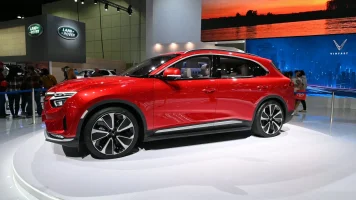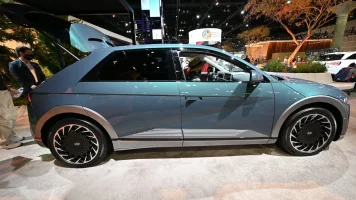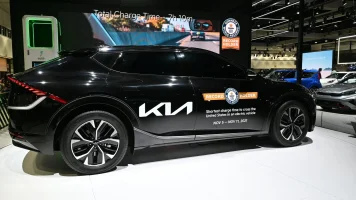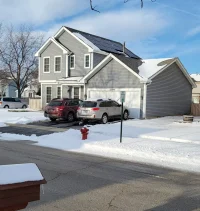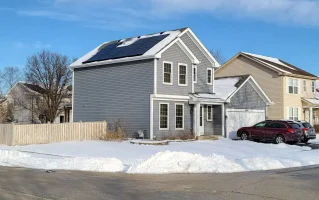Going EV is probably going to be the best thing for the OP. As a former Stinger (3.3T) owner that made the switch, I had questions and heard a lot of negative comments about BEVs (Battery Electric Vehicles) as to why you shouldn't get one. This started since I first went hybrid back in 2012. Sales people would try to steer me away from them and push purely gas vehicles. When I was shopping for my 2014 Optima Hybrid, the salesman, an older gentleman who was getting ready to retire, was very negative about them. He had never driven one but after our test drive, he wanted to get one. I started with this to say a lot of people hear things about these vehicles and get put off without knowing the actual facts. We have all been driving ICE cars for years and know the good and bad about them as well as things we either experience, have friends or family members experience about a particular brand which keep us from getting one. EVs are much the same. Here in the US, the offerings for EV are relatively small in comparison to the rest of the world however, starting this year, that is going to change.
There will be a number of EVs coming to the market in a few months time, at which point you will be able to see which you prefer. Let me start with my experience on going EV. I traded my Stinger for an Audi e-tron last year and it has been a really good vehicle. While my commute wasn’t as long as yours, I was looking at ways to reduce costs. Charging my vehicle out here in AZ can range from $0.07 - $0.11 for super off peak (11pm -5am) and up to $0.28 if you do it during the summer at peak times, in the day. I didn’t get any special charger installed as the car came with one, I just had a dryer plug installed in the garage. I didn’t see the point in paying for an aftermarket option when I have a perfectly working charge cable. As someone that had an Audi back in the day, I loved the car,, the seats and how comfortable it was. I don’t like that it burned oil, which required adding a couple quarts before the service was due and the cost to repair once it was out of warranty. I got this one after researching and seeing there were no “real” maintenance required other than checking parts. The lease deal on the car was too good to pass up, $20K off including the federal (didn't get as a tax write off but Audi rolled it into the discount) incentive ($78K price), under $600/mo, got $1k from the power company for having an EV, plus they were offers for deal off charging cable and installation (that I skipped). Some states have some great incentives for EV owners as well as power companies. Who is going to pass up on getting some extra cash from going EV?
Let's hit up some perceived disadvantages of EV ownership.
1. They are not good in cold weather.
While the cold does affect the battery and reduce the range, ICE vehicles are also affected by the cold and will see reduced range in extreme cold weather. There is some data from the east coast recently on how long an EV kept warming it's cabin when stuck in that snow storm they had that blocked the highways. When idle, the battery usage is minimal compared to an ICE vehicle that depends on the engine running to keep the cabin war.
2. The battery don't last and need to be replaced in 5 years.
Most manufacturers warranty their battery for 8-10 years and the battery will continue to work beyond that. Aftermarket vendors are now able to swap out degraded cells to get the vehicle back to as new state and who knows what will change in the future. You might be able to replace cell with higher capacity versions, resulting in longer range. EV modification will be a thing later on, much like we do with ICE. We know that will happen.
3. It takes a long time to charge an EV.
Today, charging an EV isn't like fueling an ICE vehicle and takes a bit longer. As battery technology changes, the charging times will get shorter. My Audi takes 30 minutes to go from 10-80%, I have charged from 0% (not something you should be doing) to 100% in 45 minutes. The Hyundai IONIQ 5and KIA EV6 will get to 80% in 18 minutes at a fast charger. You can charge at home overnight, while you sleep, like your phone, in a few hours and have a charged up vehicle ready to go every morning (if you prefer), without have to go to a DC fast charger.
4. EVs aren't better for the environment.
That's up for debate. The battery production process adds CO2 to the environment however, once produced and on the road, they are not polluting the air like ICE vehicles. The other part of the this argument is typically about where the electricity to charge the vehicle comes from. It's funny how people aren't concerned about where the energy to power their house and appliances comes from and how it affect the environment but somehow the ones going into an EV, is such a major concern. If you currently get your energy from coal, wind, water, nuclear or solar, that's typically where your car will get it's energy.
Here are some of the advantages.
1. EVs are better for the environment.
As a vehicle, once it is on the road, it is not emitting any pollutants into the environment. However, you can go back to #4 in the disadvantage area for more on that debate.
2. They cost less to own.
The overall cost of ownership from fueling and maintenance is less than an ICE vehicle. That's not to say some places aren't charging a lot for energy however, they typically are less that fueling an ICE vehicle.
3. EVs cost less to fuel.
The cost per gallon of fuel and ICE vehicle is more than what it cost to charge an EV. While fast chargers can be pricey, they are still less costly. Most EV owners only use these when traveling long distances as you can charge at home for significantly less.
4. EVs are more fun to drive.
They can be if you aren't going for a purely economical version and even those has more torque, instant torque off the line than their ICE counterparts.
These days you can find level 2 chargers in a lot of places, within cities and DC Fast chargers are available for long journeys. On recent trips to California, the car recommend 2 stops for charging about 2 hours apart. That is a good time to stop for a break. When I was younger, I would do the DC to NY run in about 4 hours and stop about 1 time for a break, in the really young military days, driving from Kansas to NY, I didn't want to stop until the car needed fuel. A lot of the fear and misconceptions come from when something is new and we have little information about it. Plus, you have folks spreading this instead of getting the facts themselves. If you can hold out until Spring, the Korean EVs will be available and as it stands, based on the folks in Europe, those vehicles are really great products. I have seen the Mustang Mach E, it's not bad looking in person but I'm not a fan of the interior. I have driven the RWD VW ID.4, it was decent but didn't have the power I wanted. Telsa's models turned me off due to their build quality but they were really quick. Never thought I would have gone Audi again but I am happy with mine. Did have a couple of hiccups in the first 6 months, coolant valve malfunction had the car down for a month and then the AC stopped working and that was fixed over a weekend. The other things were minor by comparison, Audi update messed up my settings but later they went back.
OP, if you haven't checked into your state and city's EV incentive programs, you might find they have things to offer that will make your transition easy. If you have any questions you would like answered, drop me a message.


